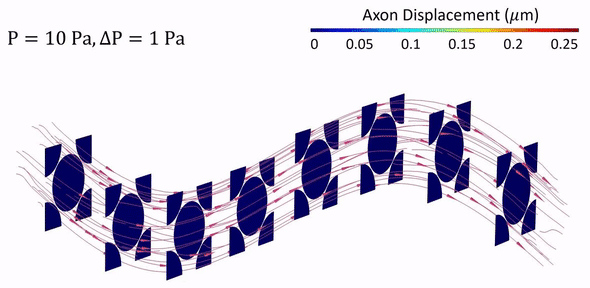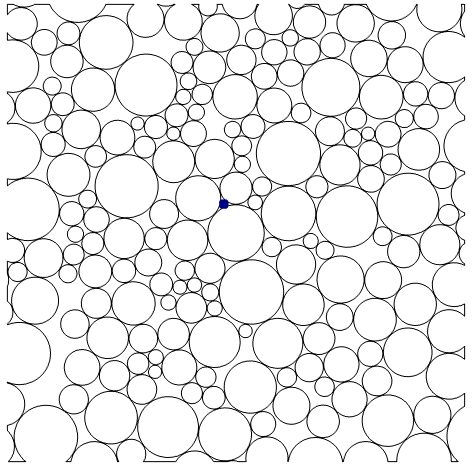Some of the codes and models I have developed in my research projects have been shared below. Welcome to view and download them for academic or industrial use, but please remember to cite the corresponding paper(s). Please do not hesitate to contact me if you have any further doubts.

A versatile microstructure generator for fibrous material: MicroFiM
This is a software application based onMATLAB. It is able to generate closely and randomly packed porous domains. By inputting the distribution of fibre diameters (currently supports Lognormal Distribution, but the source code can be easily changed to support any other distributions), the approximate distance between fibres and the size of the domain, the software will automatically generate the geometric information of the porous media.
Related Paper:
Yuan, T., Shen, L., & Dini, D. (2024). Porosity-permeability tensor relationship of closely and randomly packed fibrous biomaterials and biological tissues: Application to the brain white matter. Acta Biomaterialia, 173, 123-134.

Lagrangian Particle Tracking Model for Manipulating the Distribution of Magnetic Nano-carriers in the Brain White Matter
This model is able to model the diffusion behaviours and diffusion coefficient of magnetic nanoparticles in brain white matter and other biological tissues with similar microstructures.
Related Paper:
Yuan, T., Yang, Y., Zhan, W., & Dini, D. (2023). Mathematical Optimisation of Magnetic Nanoparticles Diffusion in the Brain White Matter. International Journal of Molecular Science, 24(3), 2534.

3D Model to Capture the Fluid-Solid Interaction between the Interstitial Fluid Flow and Fibres
This model is able to reproduce the three-dimensional fluid-solid interaction (FSI) between the interstitial fluid flow and fibres.
Related Paper:
Yuan, T., Zhan, W., & Dini, D. (2023). Linking fluid-axons interactions to the macroscopic fluid transport properties of the brain. Acta Biomaterialia, 160, 152-163.

Lagrangian Particle Tracking Model for the Prediction Charged Nanoparticles' Diffusivity in Porous Media
This model is able to predict the diffusion behaviours and diffusion coefficient of charged nanoparticles in porous media.
Related Paper:
Yuan, T., Gao, L., Zhan, W., & Dini, D. (2022). Effect of particle size and surface charge on nanoparticles diffusion in the brain white matter. Pharmaceutical Research, 39(4), 767-781.

Fluid-Solid Interaction Model for Characterisation of Pressure-dependent Permeability
This model is able to predict fluid transport in soft tissues when the permeability change caused by pressure-driven deformation of the cells cannot be ignored. This is enabled by explicitly modelling the fluid-solid interaction between the fluid and cell.
Related Paper:
Yuan, T., Zhan, W., Jamal, A., & Dini, D. (2022). On the microstructurally driven heterogeneous response of brain white matter to drug infusion pressure. Biomechanics and Modeling in Mechanobiology, 21(4), 1299-1316.

ABAQUS Model for Post-buckling Modelling of Stiffened Plate
This model is able to provide precise predictions of buckling behaviours of stiffened plates under compression load with different boundary conditions and considering geometry imperfection.
Related Papers:
1. Yuan, T., Yang, Y., Kong, X., & Wu, W. (2021). Similarity criteria for the buckling process of stiffened plates subjected to compressive load. Thin-Walled Structures, 158, 107183.
2. Kong, X., Yang, Y., Gan, J., Yuan, T., Ao, L., & Wu, W. (2020). Experimental and numerical investigation on the detailed buckling process of similar stiffened panels subjected to in-plane compressive load. Thin-Walled Structures, 148, 106620.
3. Wang, Z., Yuan, T., Kong, X., & Wu, W. (2022). A universal similarity method and design procedure for buckling assessment of stiffened plates under compression load on real ships. Thin-Walled Structures, 181, 110025.